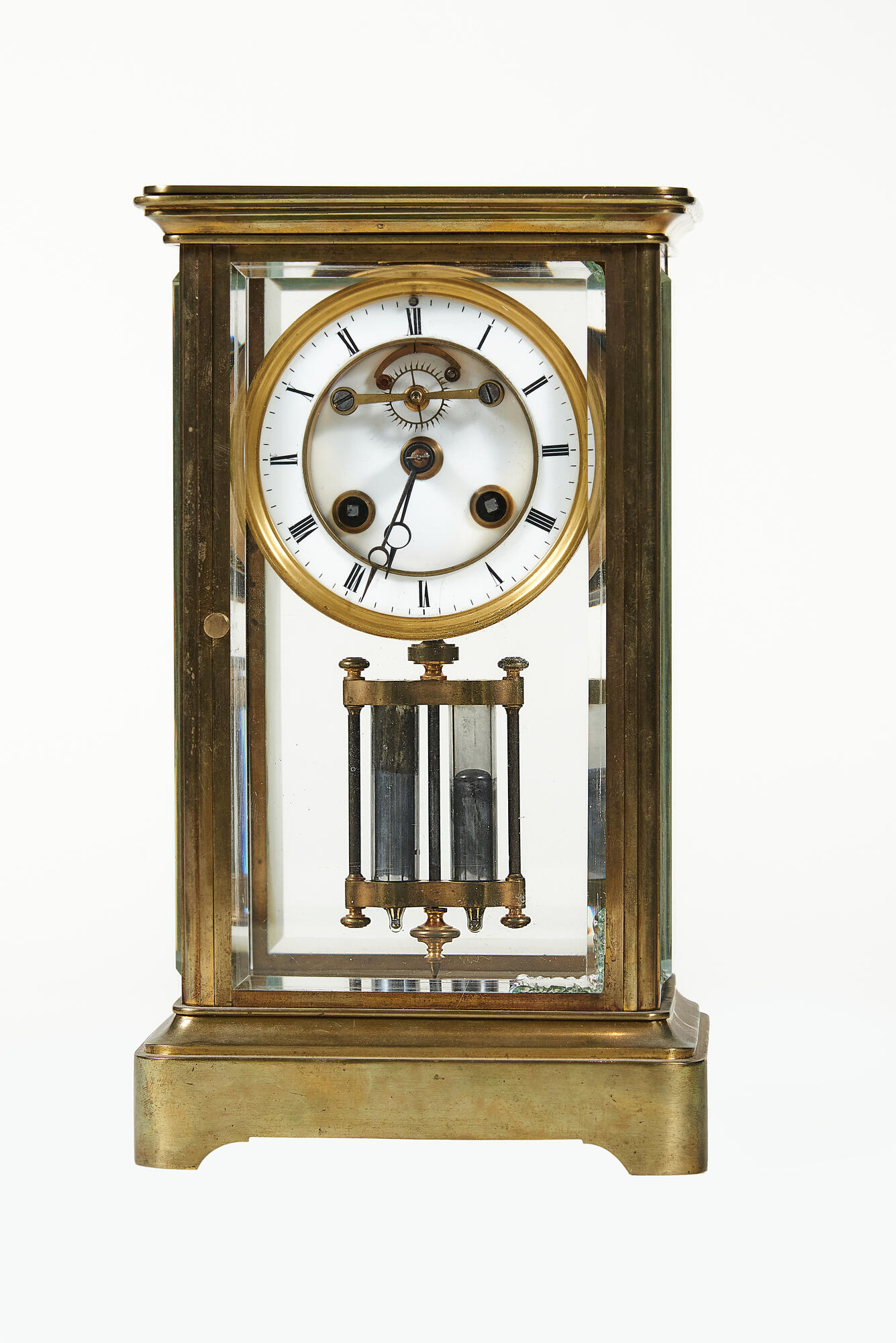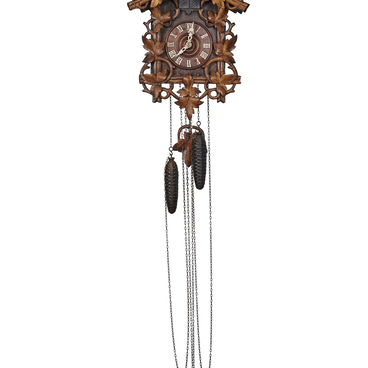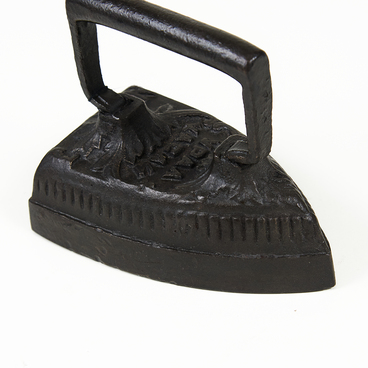For centuries, watchmakers have been striving to achieve a high degree of accuracy. A mercury pendulum, the main timekeeping element, is installed in the clocks in the museum collection. The oscillations of a pendulum depend on many factors, including its length, which changes when exposed to heat. The pendulum shaft is made of metal which tends to become more flexible as it heats up, thus prone to overstretching. If this happens, the clock will most probably run slow. This is why for a long time the pendulum shaft was made of wood. A system intended to compensate for this drawback was developed only in the 18th century.
The mercury pendulum itself was designed by English watchmaker George Graham. Graham was an inventor and geophysicist and is remembered for many important discoveries in the fields of horology and astronomy, such as the invention of the first stopwatch. At the peak of his fame, he was head of the Clockmakers’ Company in London and an honorary member of the Royal Society. Overall, he created more than three thousand clocks throughout his life.
Graham spent many years studying the reason why clocks could run slow or fast. In the end, the scientist concluded that it was primarily due to changes in temperature. In 1715 he invented a mechanism that allowed the clock to be accurate to 0.1 second — the mercury pendulum. It was used for over two hundred years before it was perfected by others.
The clock in the museum collection also features the Graham pendulum, which has two glass flasks filled with mercury. Its structure is formed by two rods made of steel and positioned on each side of the clock. Graham was the first to use mercury to ensure the accuracy of clocks. When the temperature rises, the pendulum’s length increases. At the same time, the mercury in the tube rises and compensates for this growth — the center of gravity of the pendulum goes down. The master accomplished this by experimenting with different metals and their properties until he finally achieved the greatest possible precision from his clockwork. The famous Swiss brand Graham is named after the watchmaker.
The mercury pendulum itself was designed by English watchmaker George Graham. Graham was an inventor and geophysicist and is remembered for many important discoveries in the fields of horology and astronomy, such as the invention of the first stopwatch. At the peak of his fame, he was head of the Clockmakers’ Company in London and an honorary member of the Royal Society. Overall, he created more than three thousand clocks throughout his life.
Graham spent many years studying the reason why clocks could run slow or fast. In the end, the scientist concluded that it was primarily due to changes in temperature. In 1715 he invented a mechanism that allowed the clock to be accurate to 0.1 second — the mercury pendulum. It was used for over two hundred years before it was perfected by others.
The clock in the museum collection also features the Graham pendulum, which has two glass flasks filled with mercury. Its structure is formed by two rods made of steel and positioned on each side of the clock. Graham was the first to use mercury to ensure the accuracy of clocks. When the temperature rises, the pendulum’s length increases. At the same time, the mercury in the tube rises and compensates for this growth — the center of gravity of the pendulum goes down. The master accomplished this by experimenting with different metals and their properties until he finally achieved the greatest possible precision from his clockwork. The famous Swiss brand Graham is named after the watchmaker.



